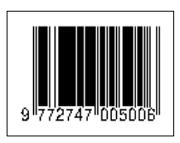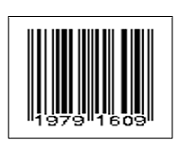EXISTING PRACTICE OF WRITTEN AND UNWRITTEN CURRICULUMS AND THEIR IMPACT ON STUDENTS IN COMMUNITY SCHOOLS IN NEPAL
Abstract
This study aims to examine the existing implementation of curriculum in school education, including explicit, covert, and null-curriculum aspects. This has been conducted in the community schools of Kathmandu to examine the factors contributing to the difference between the expected learning outcomes of school education and the actual results as stated in the curriculum. The study involved grade-eight students and their teachers from five community schools situated in the suburban suburbs of Kathmandu. The authors used a range of data collection techniques, including thorough interviews, group discussions, and direct observation. The study found that educational activities that encourage students to create meaningful connections are more valuable than those that discourage them from gaining real-world knowledge and skills. The curriculum promotes educational activities that actively engage learners and are guided by teachers. This approach helps students develop the necessary academic and transversal competencies. To cultivate students with the necessary skills, it is crucial for the curriculum to address the adverse effects of inadequate teaching and the overemphasis on high-stakes testing. This has resulted in a disproportionate emphasis on exam-focused instruction and learning. The study suggests that the curriculum should integrate the essential elements of the written, hidden, and null curriculum to provide hands-on learning experiences and promote the growth of both academic and transferable skills in children.
Keywords
Full Text:
PDF (Bahasa Indonesia)References
Aliakbari, M., & Faraji, E. (2011, October). Basic principles of critical pedagogy. In 2nd international conference on humanities, historical and social sciences IPEDR , 17, 78-85.
https://www.tnteu.ac.in/pdf/library/PEDAGOGY/22.
Alsubaie, M. A. (2015). Hidden curriculum as one of current issue of curriculum. Journal of Education and Practice, 6(33), 125-128. https://files.eric.ed.gov/fulltext/EJ1083566.pdf
Arifin, S. R. M. (2018). Ethical considerations in qualitative study. International Journal of Care Scholars, 1(2), 30-33. https://www.researchgate.net/publication/328019725
Boateng, P., Caballes, D. G., Aboagye, M. O., Asare, K., & Anane, V. (2023). An Exploratory Study on the Null Curriculum in the Basic Education System in Ghana. Anatolian Journal of Education, 8(1), 131-140. https://doi.org/10.29333/aje.2023.819a
Cahapay, M. B. (2020). Revisiting the functions of curriculum theory: A foundational ground for the development of procedural model to determine the cull curriculum. Indonesian Journal of Curriculum and Educational Technology Studies, 8(2), 97-101. https://doi.org/10.15294/ijcets.v8i2.40086
Friesen, N., Henriksson, C., & Saevi, T. (Eds.). (2012). Hermeneutic phenomenology Method (Vol. 4). Sense Publishers. Retrieved from
file:///C:/Users/ACER/Downloads/Hermeneutic%20phenomenology%20method.pdf
Escribano, S., Juliá-Sanchis, R., Congost-Maestre, N., Perpiñá-Galvañ, J., & Cabañero-MartÃnez, M. J. (2022). Spanish Linguistic validation of the self-efficacy questionnaire in communication skills. Contemporary Nurse, 58(2-3), 161-17. DOI: https://doi.org/10.1080/10376178.2021.2015415
Gholami, M., Rahimi, A., & Dorri, E. R. (2016). A reflection on null curriculum. Iloabj Journal, 7, 218-223. https://www.researchgate.net/publication/310766803
Kazemi, S., Ashraf, H., Motallebzadeh, K., Zeraatpishe, M., & Piro, J. S. (2020). Development and validation of a null curriculum questionnaire focusing on 21st century skills using the Rasch model. Cogent Education, 7(1), 1-17. https://doi.org/10.1080/2331186x.2020.1736849
Lie, D. A., Nodal, S., de la Torre, M., Forest, C. P., Richter-Lagha, R., & Lohenry, K. (2020). Impact of a Longitudinal Medical Spanish Curriculum on Student Communication Skills. The Journal of Physician Assistant Education, 31(1), 23-27. DOI: 10.1097/JA.0000000000000293
Melvin, L., Connolly, K., Pitre, L., Dore, K. L., & Wasi, P. (2015). Improving medical students' written communication skills: design and evaluation of an educational curriculum. Postgraduate medical journal, 91(1076), 303-308. DOI: 10.1136/ostgradmedj-2014-132983
Monchinski, T. (2008). Critical pedagogy and the everyday classroom. Critical Pedagogy and the Everyday Classroom (Vol.3 Explorations of Educational Purpose, pp. 115-139. Springer. www.springer.com/series/7472
Ornstein, A. C., & Hunkins, F. P. (2018). Curriculum: Foundations, Principles, and Issues (7th ed.). Pearson. Retrieved from
https://daneshnamehicsa.ir/userfiles/file/manabeh/francis_p_hunkins_allan_c_ornstein.pd
Riopel, M. A., Litwin, B., Silberman, N., & Fernandez-Fernandez, A. (2019). Promoting professional behaviours in physical therapy students using standardized patient feedback. Physiotherapy Canada, 71(2), 160-167. Doi: 10.3138/ptc.2018-04.e
Sarpong, M. A., & Korley, S. K. (2021). Hidden curriculum: Does it matter? International Journal of Humanities and Social Sciences, 7(1), 36-46. https://www.researchgate.net/publication/353919400
Wang, C., & McWatt, S. C. (2023). Visuospatial ability and student approach to learning as predictors of academic performance on written versus laboratory"based assessments in human anatomy. Anatomical Sciences Education, 16(6), 1187-1199. DOI: 10.1002/ase.2317.
Weiting Tan, D., Rabuka, M., Haar, T., & Pellicano, E. (2023). "˜It'sa symbolic violence': Autistic people's experiences of discrimination at universities in Australia. Autism, 13623613231219744. DOI: 10.1177/13623613231219744
Yaşlı, M., Koçak Algül, S., & Alpay-Kanıtez, N. (2023). The impact of the COVID-19 pandemic on internal medicine clerkship by comparing exam results and feedback. Psychology, Health & Medicine, 28(8), 2375-2380. DOI: 10.1080/13548506
Yun, Y. H., Jo, D. H., Jeon, S. K., Kwon, H. Y., Jeon, Y. M., Shin, D. H., & Choi, H. J. (2022). The impact of the modified schedules of anatomy education on students' performance and satisfaction: Responding to COVID-19 pandemic in South Korea. PLoS One, 17(4), e0266426. https://doi.org/10.1371/journal.pone.0266426
DOI: https://doi.org/10.37479/jkeb.v17i1.26223
Refbacks
- There are currently no refbacks.
Copyright (c) 2024 Oikos Nomos: Jurnal Kajian Ekonomi dan Bisnis


1.png)








